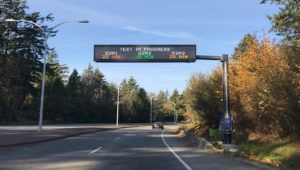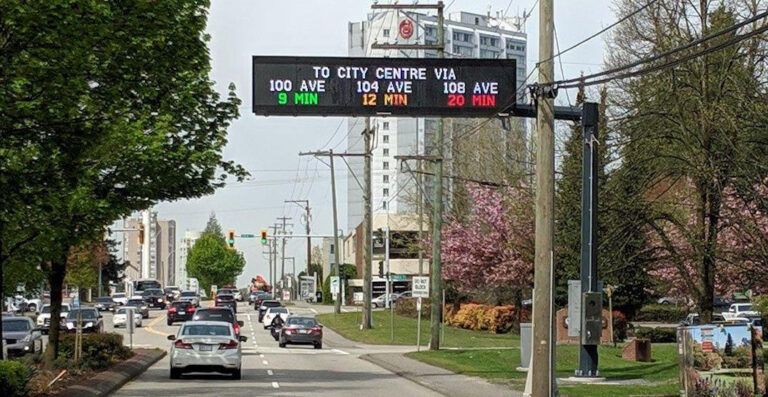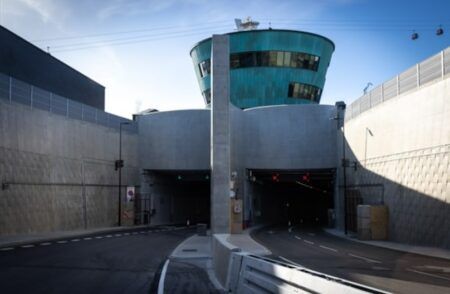The City of Surrey in British Columbia has launched a new Advanced Traveller Information System (ATIS), becoming the first Canadian application of the technology installed on arterial roads in an urban environment.
Located in the greater Vancouver metropolitan area, Surrey has deployed the ATIS technology to help motorists make more informed decisions to improve their commute, reduce the environmental impact of driving, and lessen driver frustration. The entire ATIS project cost C$1.5m (US$1.1m), with half of the project funded by the federal government from Transport Canada’s Asia-Pacific Gateway Corridor Infrastructure Fund, with the municipal government paying for the remainder. Launched after several months of rigorous testing, the new ATIS in Surrey will fully integrate with the municipal government’s other systems, including the exclusive wireless radio communications system, nearly 500 traffic cameras, and over 410 networked traffic signals. 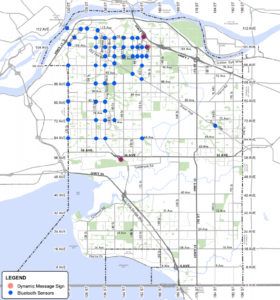
Three overhead, full-colour LED Dynamic Messaging Signs (DMS) are situated to provide alternate adjacent route choices for City Centre-bound drivers arriving from Highway 1 in the north and Highway 99 in the south. The first is located westbound on 104 Avenue at 154A Street and provides route options via 100 Avenue, 104 Avenue and 108 Avenue. The second sign, at the 5500 block of King George Boulevard, displays options via 132 Street, 140 Street and King George Boulevard. The third, situated eastbound on the 152 Street off ramp from Highway 1, shares real-time travel to Surrey’s downtown via 100 Avenue, 104 Avenue and 108 Avenue.
The new DMS display travel times derived from data collected and analysed from fifty Bluetooth sensors installed last year at selected traffic signals throughout the city’s northwest. The ATIS detects anonymized Bluetooth-enabled devices on the roads, encrypts the data and routes it to the Traffic Management Centre (TMC), where a computer tracks the speed and travel time of the detected devices as they move through the city. A comparison of real-time speeds to historical speeds alerts staff when road links are travelling slower than normal, and traffic signals are then adjusted, and the public is alerted to changing traffic conditions. 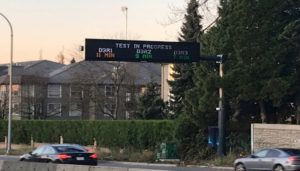
The new system is supported by TMC traffic engineers and technologists who actively manage more than 2,500 traffic devices across approximately 122 square miles (316 sq km) of city space. Surrey’s ATIS is programmed to use green, orange, and red text colours that correspond to increasingly longer travel times for each given route, with the information posted estimated from real-time data detected by the Bluetooth sensor network. Additional important messages for motorists may be posted on the ATIS signs by Surrey’s TMC staff including information about collisions, construction, severe weather or road conditions, ‘AMBER Alerts’, and safe driving reminders.
“As we activate our Dynamic Messaging Signs, the City of Surrey is opening up even greater possibilities to make traffic safer, improve flow, and reduce environmental impact,” said the city’s Mayor, Doug McCallum. “We have been recognized for being at the forefront of leading-edge, innovative communications technologies. The Advanced Traveller Information System that is being launched today is the latest example of how we are continuously improving our traffic information network in Surrey.” 